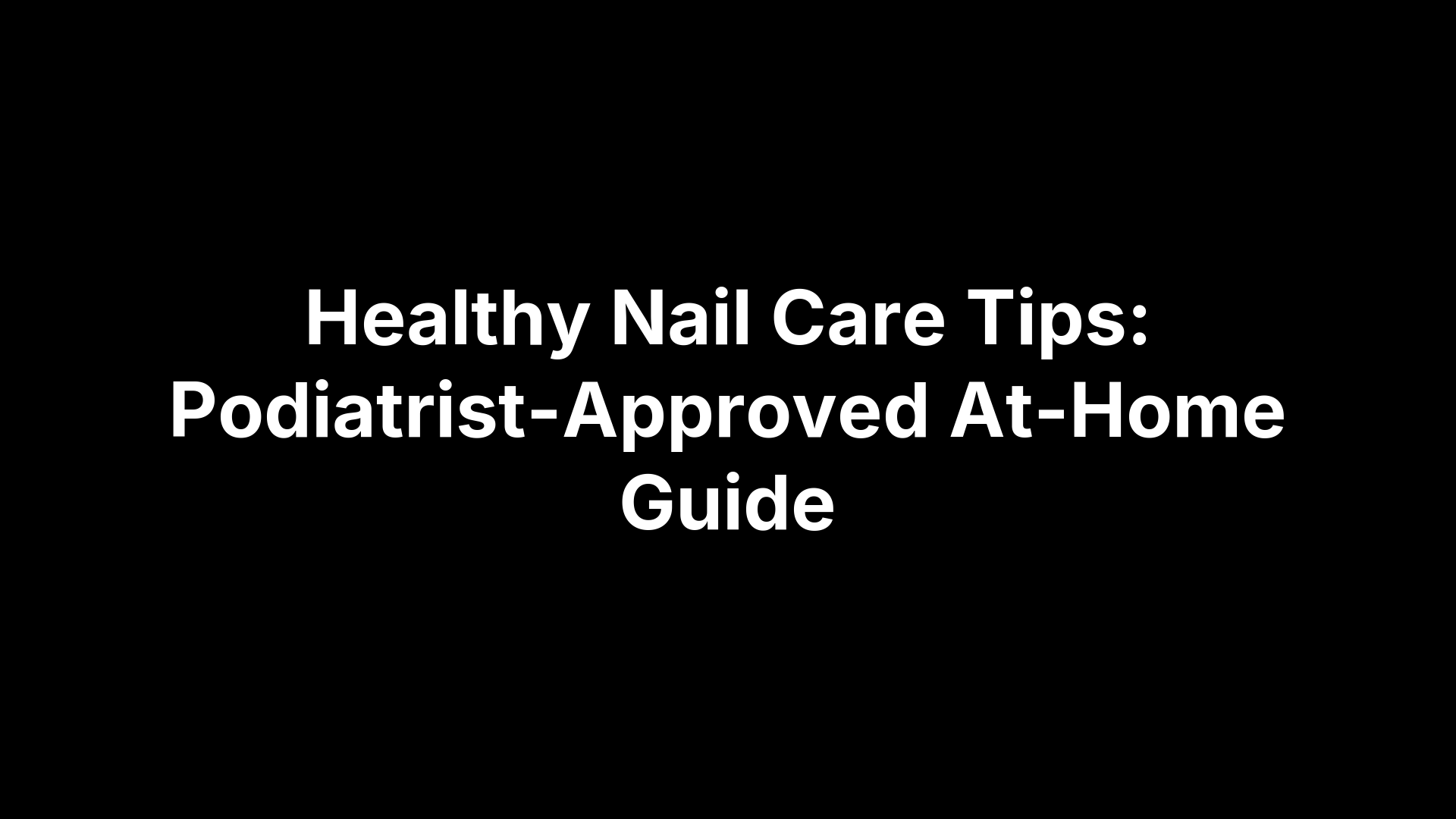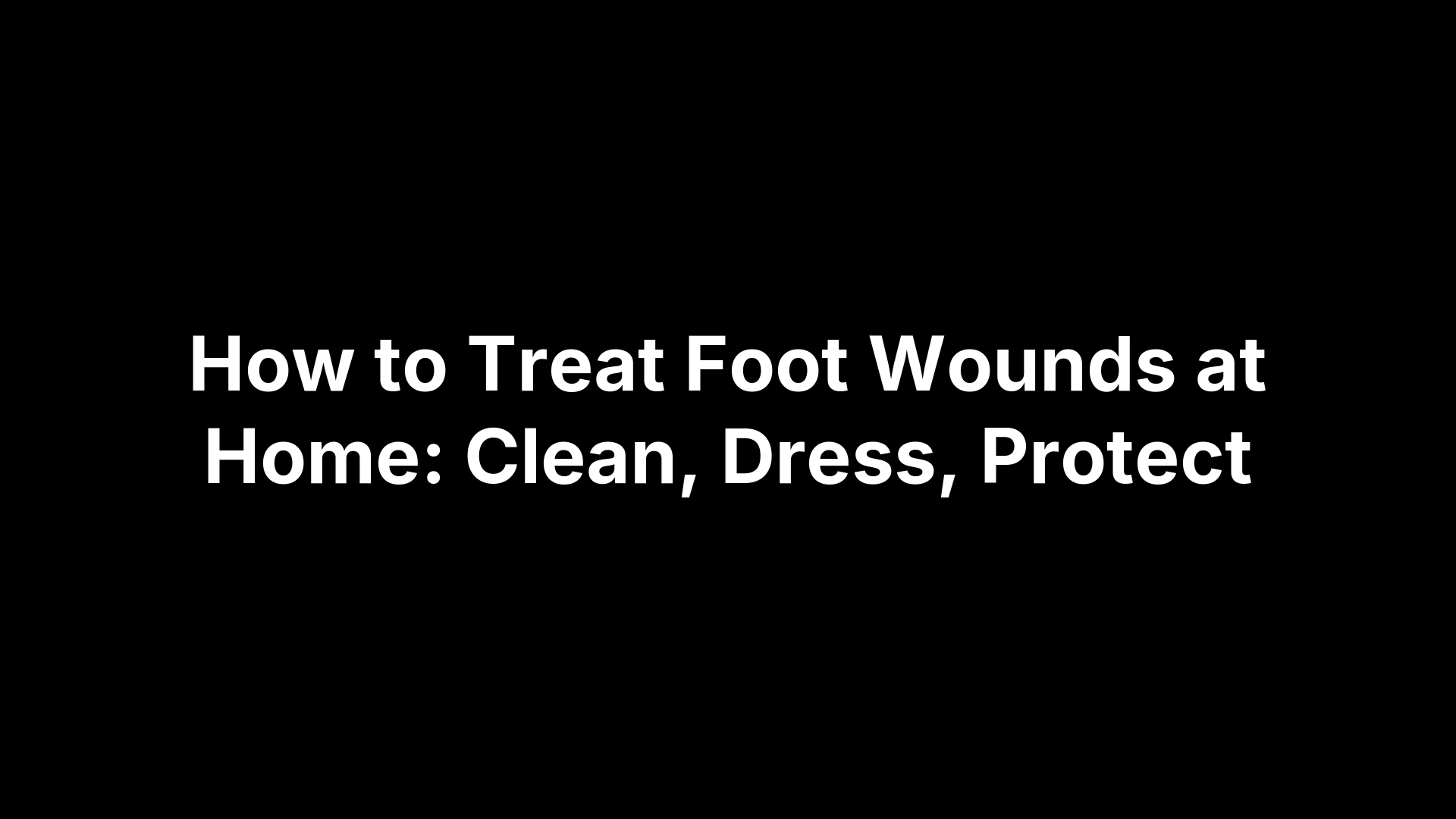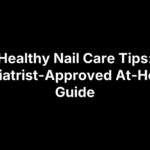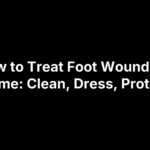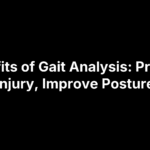Surgery isn’t the only card doctors can play when something hurts, swells, or stops moving the way it should. Often the first play is conservative treatment—a deliberately non-surgical game plan that relies on physical therapy, braces, targeted medication, and other low-risk tools to calm symptoms and coax tissues to heal. It’s evidence-based, patient-focused, and often surprisingly quick at delivering relief and lasting results.
This guide breaks down the medical definition of conservative treatment, why physicians prefer to start with it, which therapies qualify, and when it’s wise to pivot toward the operating room. Along the way you’ll see real-world examples, timelines for progress, and the red flags that demand faster action. If you’re weighing options for a sore heel, aching back, or stubborn joint, the next sections will give you the clarity you need—so you and your care team can choose the least invasive path that still gets you moving again.
What Does Conservative Treatment Mean in Medicine?
In medical jargon, “conservative treatment” is shorthand for an active, physician-directed plan that purposely avoids invasive procedures such as open surgery, arthroscopy, or endoscopy. Instead, clinicians rely on low-risk tools—exercise therapy, bracing, targeted medications, and lifestyle changes—to control pain, reduce inflammation, and encourage the body’s own repair mechanisms.
Crucially, this approach is not the same as “watchful waiting.” While observation may be part of the strategy, conservative care involves scheduled interventions, progress checks, and evidence-based adjustments. You might also see it labeled supportive care, comprehensive conservative care, or (in chronic illness) palliative or comfort care. Think of it as the middle of the treatment spectrum: it offers more structure than home remedies but stops short of the scalpel.
Key Characteristics
- Non-surgical and often non-pharmacologic first; medications added judiciously
- Seeks to preserve normal anatomy and long-term function
- Customized to each patient’s diagnosis, lifestyle, comorbidities, and goals
Typical Settings Where It’s Used
- Orthopedics: stable fractures, sprains, early arthritis
- Spine care: disc herniation, mechanical back pain
- Chronic disease management: kidney or heart failure symptom control
- Podiatry & sports injuries: plantar fasciitis, tendonitis, stress reactions
Core Principles and Goals of Non-Surgical Management
Conservative care isn’t just a grab-bag of non-operative tricks—it follows a clear philosophy. The primary goals are to control pain, restore or maintain function, and let the body heal while dodging the complications that can accompany anesthesia, incisions, and prolonged downtime. Every modality is chosen because outcome studies or clinical guidelines show it works for the specific diagnosis in question.
Just as important, the plan must fit the patient. Age, activity level, medical history, and personal preferences all influence which therapies make the cut and how aggressively they’re applied. The four principles below keep the process focused and safe.
Principle 1: Least Invasive First
Physicians start with the simplest, lowest-risk option—think ice, activity modification, or a short course of physical therapy—and only escalate if progress stalls or red flags emerge.
Principle 2: Patient-Centered Decision-Making
Shared decision making means you help pick the tools after discussing expected benefits, recovery timelines, cost, and how each choice meshes with work, sports, and family obligations.
Principle 3: Functional Rehabilitation
Early, guided movement and strength work prevent muscle loss, joint stiffness, and the “fear of motion” cycle that can linger long after pain fades.
Principle 4: Risk–Benefit Optimization
Every step weighs potential gains against downsides: for example, comparing infection and re-operation rates in surgery versus the lower but still real risks of medication side effects.
Common Conservative Treatment Modalities Explained
“Non-surgical” doesn’t equal “one-size-fits-all.” Physicians pull from a broad toolbox, combining several low-risk tactics so each patient gets just the right amount of support, movement, and pain control. The quick-reference table below shows how the most common modalities work, when doctors reach for them, and the main cautions to keep in mind.
| Modality | How It Works | Typical Indications | Possible Downsides |
|---|---|---|---|
| Physical & Exercise Therapy | Graded stretching, strengthening, neuromuscular re-education improve biomechanics and circulation | Sprains, tendonitis, low-back pain, post-fracture stiffness | Temporary soreness, poor results if home program skipped |
| Mechanical Supports | Casts, braces, walking boots, custom orthotics limit load or guide motion | Stress fractures, ankle instability, plantar fasciitis | Skin irritation, muscle deconditioning with prolonged use |
| Pharmacologic Options | NSAIDs, topical creams, disease-modifying drugs target inflammation or alter disease course | Arthritis, acute strains, autoimmune joint disease | GI upset, kidney strain, systemic side effects |
| Manual & Alternative Therapies | Hands-on joint mobilization, massage, acupuncture, dry needling modulate pain pathways | Myofascial pain, headaches, overuse syndromes | Short-lived bruising, variable evidence for some techniques |
| Lifestyle & Behavioral Changes | Weight loss, ergonomic tweaks, sleep hygiene, smoking cessation reduce mechanical stress and improve healing milieu | Knee OA, chronic back pain, wound healing | Requires sustained motivation; progress can be slow |
| Image-Guided Injections | Ultrasound- or fluoro-guided steroid, PRP, or viscosupplement shots calm inflammation or lubricate joints | Bursitis, disc inflammation, knee OA | Injection pain, rare infection, transient sugar spike in diabetics |
Physical & Exercise Therapy
A licensed PT tailors range-of-motion drills, balance work, and progressive loading so tissues remodel without overload. For an ankle sprain, that might mean resistance-band eversion followed by proprioceptive board drills once swelling subsides.
Mechanical Supports
Rigid or semi-rigid devices share the load while damaged structures knit. A walking boot off-loads a metatarsal stress fracture; functional ankle braces let athletes stay mobile yet protected.
Pharmacologic Options
Over-the-counter NSAIDs (think ibuprofen) curb inflammation, while prescription DMARDs slow joint destruction in rheumatoid arthritis. Doctors watch dosage, duration, and existing kidney or gut issues closely.
Manual and Alternative Therapies
Soft-tissue massage boosts local blood flow; spinal manipulation can unlock joint restriction. Evidence is solid for some uses (e.g., massage for chronic low-back pain) and mixed for others, so practitioners track objective gains.
Lifestyle & Behavioral Modifications
Dropping just 10 % of body weight can slash knee-joint forces by hundreds of pounds per step, easing osteoarthritis pain. Ergonomic desk adjustments and scheduled movement breaks likewise reduce cumulative strain.
Image-Guided Injections (Minimally Invasive)
Because the needle is tiny and there’s no incision, guidelines still file cortisone or PRP shots under conservative treatment. Real-time imaging ensures pinpoint accuracy, maximizing relief while minimizing collateral tissue irritation.
When Is Conservative Care Recommended—And When Is Surgery Unavoidable?
Doctors don’t flip a coin to choose between rehab and the operating room. They rely on a simple decision tree that weighs structural stability, neurologic or vascular risk, symptom trajectory, and how well a patient is coping with daily life. If the joint is aligned, the nerve signals are intact, and pain is improving, conservative measures usually get the first nod. On the other hand, “can’t-miss” red flags—loss of circulation, progressive weakness, or bones sitting wildly out of place—move surgery to the top of the list.
The following guide shows where the line is typically drawn. Remember, every case is nuanced, and patient preference always factors in.
Indications for Conservative First
- Acute soft-tissue injuries without gross instability (e.g., Grade I–II ankle sprain)
- Mild to moderate osteoarthritis or degenerative disk disease
- Non-displaced or hairline fractures that hold alignment on X-ray
- Early lumbar disc herniation without worsening motor deficit
- Tendonitis and overuse conditions responsive to activity modification
- Patients with medical comorbidities that make anesthesia high-risk, yet symptoms remain tolerable
Red-Flag Scenarios Requiring Surgical Consult
- Open fractures or joints visibly out of place
- Compromised blood flow (cold, pulseless limb) or rapidly expanding swelling
- Progressive neurologic loss—foot drop, bowel/bladder dysfunction, spinal cord signs
- Complete tendon or ligament rupture causing functional failure (e.g., Achilles snap)
- Failure of well-executed conservative care after an appropriate trial period
- Infections unresponsive to antibiotics or abscess formation
Timeframes for Reassessment
Most evidence-based protocols allow a 6–12 week window to judge progress. At each follow-up, clinicians track pain scores, strength, and functional milestones. Improvement trending upward? Continue or taper therapy. Plateau or decline? Expect imaging updates, a second opinion, and possible surgical scheduling. Certain emergencies—loss of pulse, escalating neurologic deficit—shrink that window to hours, not weeks.
Conservative Treatment Step-by-Step: From Diagnosis to Follow-Up
Conservative care follows a predictable road map, from pinpointing the problem to long-term prevention. Knowing each milestone helps you stay engaged and judge whether progress is on track.
Initial Assessment and Imaging
Visit one covers symptom history, hands-on exam, and basic functional tests. Plain X-rays screen for fractures; ultrasound or MRI is added only when soft-tissue details will change management or a hidden red flag must be excluded.
Collaborative Care Plan Development
You and the clinician set concrete targets—“climb stairs pain-free,” “run a 5K.” The plan might pair twice-weekly PT with a brace and a brief NSAID course. Costs, timelines, and home duties are reviewed before the first progress check is booked.
Monitoring Progress and Adjusting Interventions
Re-evaluation every two to four weeks tracks pain scores, range of motion, and activity tolerance. Improvement leads to tapering supports; stalls invite tweaks such as different exercises or an image-guided injection. Deterioration sparks faster imaging and, if needed, surgical referral.
Discharge Criteria and Long-Term Prevention
You’re released when pain is negligible, strength and balance match the opposite side, and daily tasks feel natural. A personalized home program, footwear tips, and periodic self-checks reduce relapse risk and keep you off the operating table.
Real-World Examples Across Different Conditions
Seeing conservative treatment in action makes the concept less abstract. Below are five quick snapshots that illustrate how non-surgical care is tailored to the diagnosis, anatomy, and goals of very different patients.
Foot & Ankle: Plantar Fasciitis
A weekend runner wakes with stabbing heel pain. The care plan: gastrocnemius-soleus stretching, night splint, custom orthotic, and three sessions of shockwave therapy. Pain falls from 7/10 to 1/10 within six weeks—no scalpel, no downtime.
Spine: Lumbar Disc Herniation
An office worker develops radiating leg pain after lifting a box. Core-stabilizing exercises, McKenzie extension, and a single epidural steroid injection calm the nerve root. She’s back at her standing desk in eight weeks, surgery avoided.
Orthopedic: Non-Displaced Radius Fracture
A teen skateboarder sustains a hairline wrist fracture. A molded fiberglass cast for four weeks followed by removable splinting and PT restores full motion; X-ray shows solid healing without pins or plates.
Chronic Disease: Kidney Failure
An 82-year-old opts for conservative management over dialysis. The team focuses on blood-pressure control, dietary tweaks, anemia treatment, and palliative counseling, preserving quality of life at home.
Sports Medicine: Rotator Cuff Tendinopathy
A pickleball enthusiast reports shoulder ache on overhead shots. Eccentric rotator-cuff strengthening, topical NSAID gel, and ultrasound therapy resolve symptoms, letting him return to the court in six weeks.
Frequently Asked Questions About Conservative Treatment
What Exactly Counts as Conservative Treatment?
Any physician-directed therapy avoiding incisions qualifies. Think PT, braces, lifestyle tweaks, meds, injections.
How Long Should I Try Conservative Care Before Considering Surgery?
Try focused care for 6–12 weeks. Escalate if pain or function worsens.
Is Conservative Management the Same as Palliative Care?
Not exactly. Conservative care seeks healing; palliative eases symptoms in irreversible disease.
Can Conservative Treatment Make Things Worse?
When supervised, it’s safe. Technique or delaying surgery can worsen issues.
Does Insurance Cover These Therapies?
Most insurers cover PT, bracing, injections. Confirm copays and visit limits first.
Key Takeaways on Choosing Conservative Care
The bottom line? Conservative management gives most patients a safe first crack at relief without the expense, scarring, or downtime of an operation. When applied early and monitored closely, it can resolve a surprising number of bone, joint, tendon, and chronic-disease problems. Keep these points in mind as you weigh your options:
- It’s active care, not passive waiting—expect a structured plan with clear milestones.
- The approach follows a “least-invasive-first” ladder; escalation only happens if progress stalls or red flags appear.
- Success hinges on teamwork. Your commitment to exercises, weight control, or bracing drives the outcome as much as the clinician’s expertise.
- A typical trial lasts 6–12 weeks; meaningful gains within that window signal you’re on the right track.
- Swift reassessment protects you from under-treating conditions that truly need surgery or advanced intervention.
Still unsure where to start? Book a conservative-care consultation with the specialists at Achilles Foot and Ankle Center and get a plan tailored to your feet—or any other joints that keep you from moving freely.


